After collecting responses for almost a month now, we are happy to announce the results of the army census. Two forms, one required and the other optional, were presented to the army community and asked to be completed.
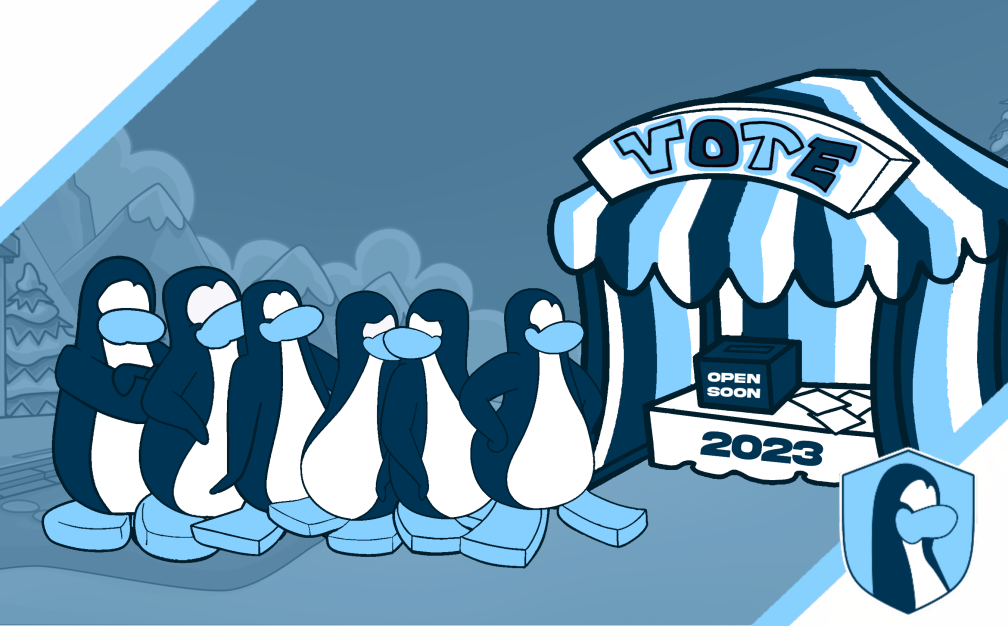
Designed by Pingo
Club Penguin Armies is proud to announce the army community census results. However, before moving on to them, we would like to take this moment to emphasize the importance of community-wide surveys like this one. Such projects have been systematically undertaken by existing media organizations over the years, with the most successful editions conducted in 2014 by Club Penguin Army Central and in 2020 by Club Penguin Army Hub.
Three years since the last one, we continue to aim to preserve the history and the community’s profile. You’ll see in this post that this year’s results were compared to the 2014 census as the post hosting the 2020 one did not have functioning pictures anymore to provide comparisons. These surveys lay the foundation for future generations to come while helping them round out the story of the past.
Many people currently serving in armies still look up to and find inspiration in the aforementioned news site years later, which is only possible thanks to their detailed databases. On the other hand, those who write news or strive to provide us with well-written wiki articles sometimes face an overwhelming barrier – much of our history has been lost or is uncertain. Our goal at Club Penguin Armies is to improve that. If armies are to live and thrive, their leaders need to know, where did they come from.
Although not as many as we were hoping, a whopping 274 members of the community filled out the “Required Form” and 157 went the extra mile and filled out the “Optional Form.” It is no secret that our community has been shrinking ever so slightly since the end of pandemic lockdowns. It should go without saying that this census does not accurately represent every single active army member in the community. Rather, it represents those who regularly check their army’s respective Discords or regularly read Club Penguin Armies.
Required Form Statistics
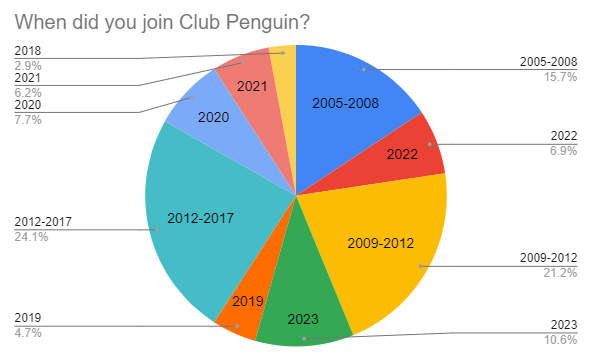
Surprisingly, it seems that our community is still riding the wave of nostalgia as many have been playing Club Penguin for over ten years. The three biggest slices from this pie represent the years before Club Penguin shut down. Compared to the 2014 census, this year’s survey shows that a great chunk of members joined Club Penguin this year. This should mean that recruiting has been consistently healthy as our community shows no sign of falling.
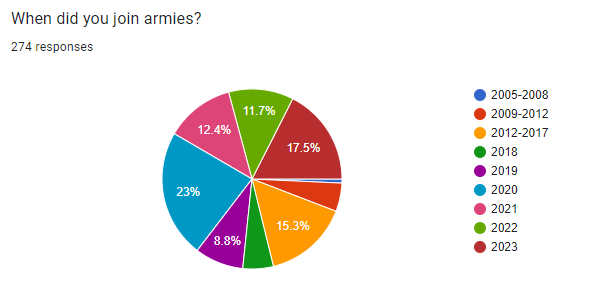
You’ll notice that there are a few pie charts that look different from the rest. This is because it was not compatible with Google Sheets for some reason. Unsurprisingly, 2020 saw the biggest boom when it came to people joining armies.
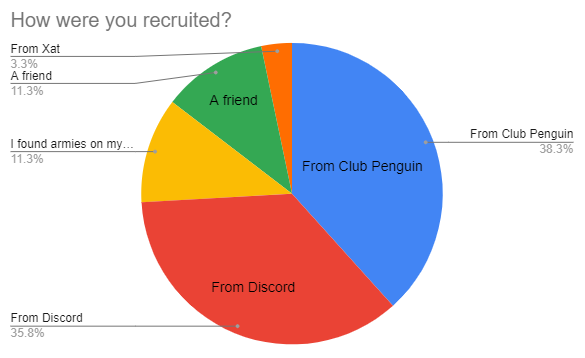
Club Penguin and Discord share half of this pie. Compared to the 2014 census, the “I found armies on my own category” seems to be significantly shrinking over time. This makes sense as Club Penguin continues to move into internet obscurity, and army leaders are forced to find new tactics to keep bringing an influx of new recruits.
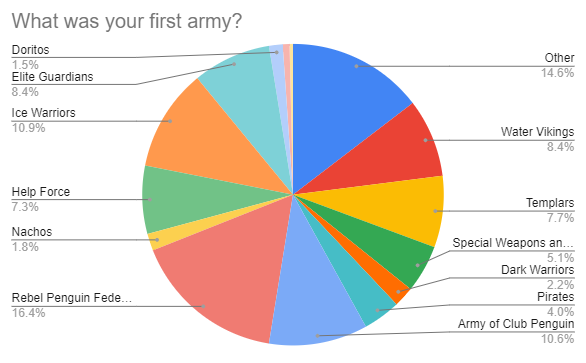
Rebel Penguin Federation takes this pie. The Rebels have been a dominating force in the private server era. In fact, they were truly one of the only major armies to continue on once Club Penguin shut down. Compared to the 2014 census, members of the community seem to be a lot more spread out than they once were; specifically, the Army of Club Penguin seeing a larger drop in its “first army” influence. Many of the submissions that went into the “Other” category turned out to be armies that mainly used Club Penguin Online.
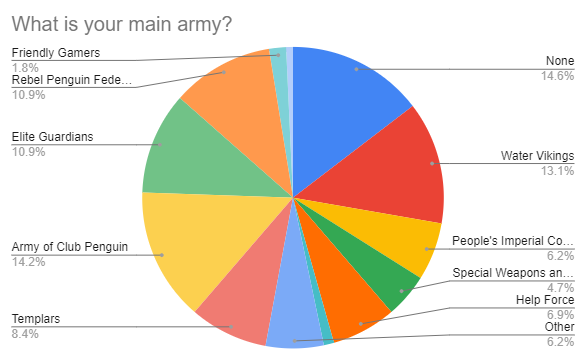
None? None. The retirees shockingly show up in the mass for this pie chart. Same as it was in the 2014 census, the Clovers’ active troops showed up for the census followed closely by the Water Vikings. However, as the years go by, the “no affiliation” group continues to grow further. It was noted that most of the submissions for “Other” in this category were members of the Dark Vikings.
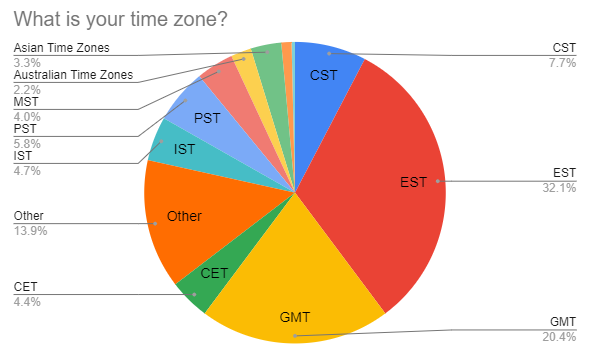
Eastern Standard Time in America and Greenwich Mean Time in Europe once again show that the community is mainly from these two places on Earth.
Optional Form Statistics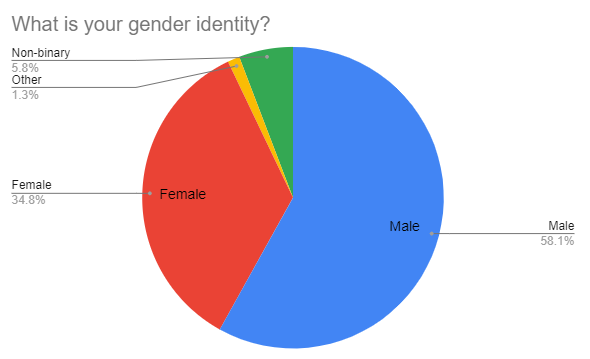
Aside from the silly, “Haha, my gender is attack helicopter,” responses that were deleted, the community still is largely compromised of male-identifying individuals. Compared to the 2014 census, which didn’t even have any other options outside the binary to begin with, the number of those in our community, who do not identify as male, has been steadily increasing.
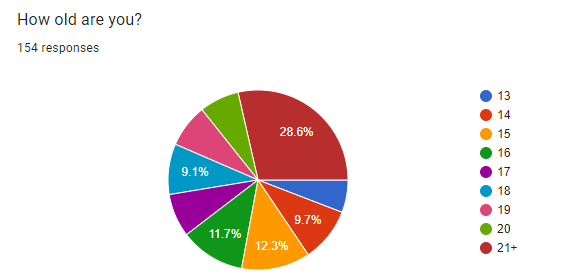
This was the other pie chart that did not agree with Google Sheets. Maybe it was a sign because the 21+ age group severely outpaced the rest. It’s time to hang up our hats, guys! Compared to the 2014 census, where the community was on trend with the target demographic, our community now has significantly aged.
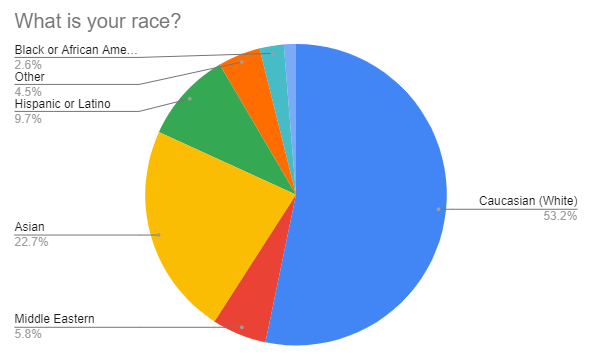
Those who identify as White make up 53.2% of the community. However, compared to the 2014 census, those who identify as Asian have seen a significant rise in members. During 2014, the AUSIA community was still finding its way under a select few who were able to rise to leadership positions in major armies. Now, it is not uncommon to discover that an army leader falls within the AUSIA time zone. Most of those who submitted under “Other” were individuals who identified as solely Indian.
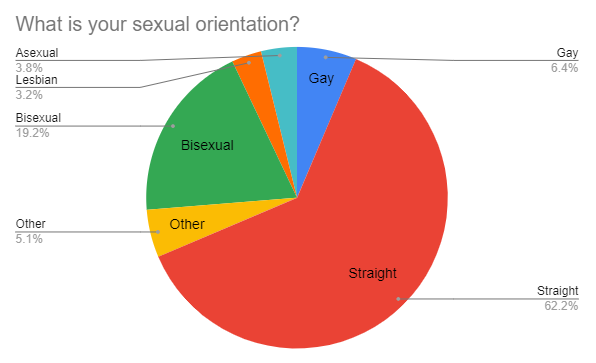
The straights are at it again. Just like in the 2014 census, those who identify as straight make up most of this pie chart. However, as the community has become more accepting, so too have the number of active individuals who identify as a sexual orientation minority.
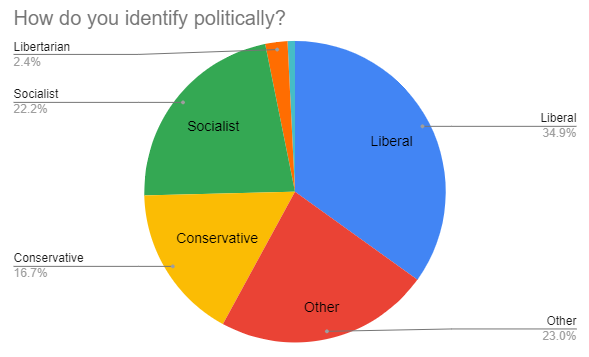
This pie chart may have been the most difficult to complete as it required a form of Western thinking, which is something the administration didn’t entirely take into consideration. Nonetheless, almost the same as it was back in the 2014 census, it seems to be a somewhat even pie chart with more liberally thinking individuals being active in the community.
Club Penguin Armies would like to take a moment to express our gratitude to everyone who filled out our forms. While the number of participants may be lower than we expected, we are thankful to all the leaders who shared our post with their armies and helped spread the word. Despite our differences, we once again came together to create something bigger and leave our mark for future generations. We’ve come a long way since 2014, and as a community, we’ve become more inclusive and diverse. While it’s true that our community has aged significantly, seeing how many joined armies in the past year or two, we should refrain from repeating that armies are nearing their end. Instead, we should acknowledge that armies are evolving. How will the community look like in another 3 years? What do you think of this year’s census results? Were they a surprise for you or on the contrary?
[…] 2023, former Chief Executive Producers Mchappy and Wynn daringly launched the first Army Census conducted by Club Penguin Armies. Garnering more than 250 responses, the […]
[…] first Club Penguin Armies census happened in 2023 under Mchappy‘s, Wynn‘s and Disha‘s administration. It contained the same […]